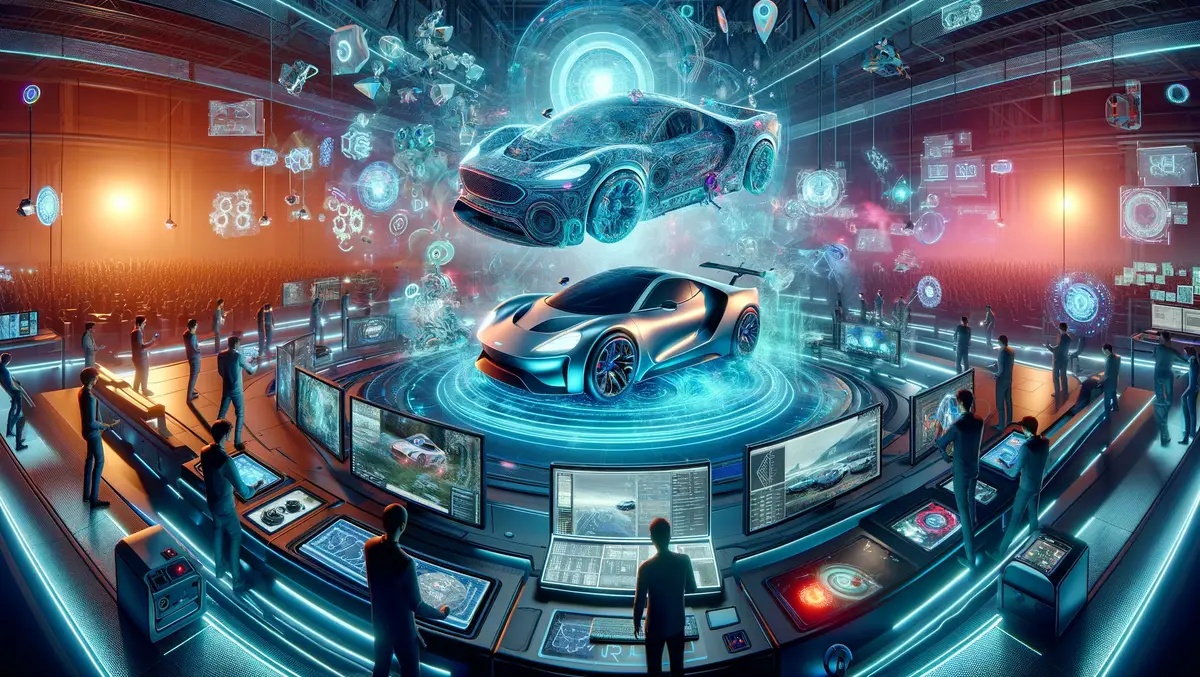
NVIDIA boosts Omniverse digital twins with Apple Vision Pro integration
NVIDIA is set to expand the capabilities of its OpenUSD-based Omniverse enterprise digital twins through their integration with the Apple Vision Pro. The tech giant announced the development of a new software framework, utilising the Omniverse Cloud APIs, that simultaneously simplifies and revolutionises the streaming of interactive, industrial digital twins from Universal Scene Description (OpenUSD) industrial scenes.
This breakthrough was showcased at NVIDIA's GTC, where developers revealed the process of transmitting scenes from content creation applications to NVIDIA's Graphics Delivery Network (GDN), a global network of graphics-ready data centres. Whether designers are assisting existing programmes with their creations, or programmers are deploying fresh code, GDN has the capacity to provide innovative 3D streaming experiences onto Apple's Vision Pro.
An interactive demonstration presented an intricately accurate digital twin of a car. The model, viewable in full fidelity on an Apple Vision Pro display, changed in real-time as a designer, wearing the Vision Pro, used a car configurator application created by CGI studio Katana on the NVIDIA Omniverse platform. The spectacle brilliantly exhibited the Omniverse's potential for spatial computing, including the intertwining of 3D photorealistic environments and physical reality.
Spatial computing, the technology making immersive and seamless interactions possible, is now in vogue for users seeking next-level experiences among people, products, processes and physical spaces. Often used in industrial enterprise, it demands ultra-high-resolution displays, capable of high frame rates to accurately reflect reality. Pairing this with NVIDIA's powerful RTX cloud rendering, the new Omniverse-based workflow creates a platform for spectacular spatial computing experiences, requiring only the Vision Pro device and an internet connection.
The use of the cloud negates the need for local hardware and allows OmniVerse to provide real-time, physically-based renderings that can be streamed directly to the Apple Vision Pro. Coupled with the device's ultra-high-resolution displays, this creates high-fidelity visuals without having to compromise any details of the datasets.
"The breakthrough ultra-high-resolution displays of Apple Vision Pro, combined with photorealistic rendering of OpenUSD content streamed from NVIDIA accelerated computing, unlocks an incredible opportunity for the advancement of immersive experiences," said Mike Rockwell, vice president of the Vision Products Group at Apple. He predicts a new era in which spatial computing will redefine the way designers, developers and users interact with digital content, thereby creating a more immersive experience than ever before.
Rev Lebaredian, vice president of simulation at NVIDIA, mirrored this sentiment, stating that the Apple Vision Pro was the "first untethered device" suitable for enterprise customers who wish to utilise immersive, fully interactive experiences without compromise.
The NVIDIA GDN, which is accessible in over 130 countries worldwide, simplifies the heavy lifting associated with compute tasks by migrating them to NVIDIA's global cloud-to-edge streaming infrastructure. This enables users to tackle demanding rendering use cases regardless of dataset size or complexity.
The Omniverse-based workflow showcased has the potential to revolutionise a broad range of industries. For designers, the technology may provide an accurate reflection of their 3D data without decimation or quality loss. Through accurate, trustworthy simulations, e-commerce experiences can be transformed. Industrial settings could benefit too; factory planners could use the dataset to identify possible bottlenecks and enhance workflows throughout their operations.


